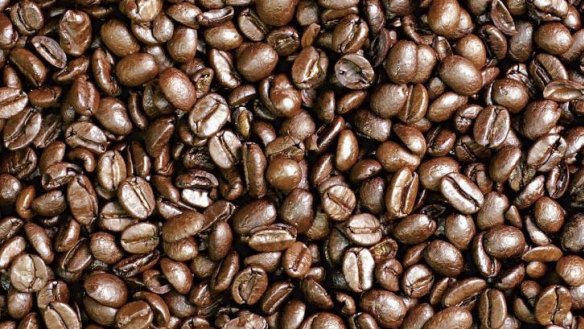Wood-fired coffee roasted the old way

In the early 1960s, the story goes, a couple of Italian brothers bought a second-hand coal-powered roaster, fired it up in their shed and began roasting coffee, shovelling the finished product into hessian sacks and delivering it to cafes around Melbourne where their fellow Italians gathered over cigarettes, cards and toasty short blacks.
The coal-fired roaster is long gone and the company the Berra brothers founded, Coffee Mio, is now one of Australia's big old-school Italian roasters, with a shop and factory in High Street, Thornbury, and a massive gas-fired roaster that is fed by hoppers, not hand.
But the home-roasting tradition of Melbourne's early Italian migrants has been revived just down the road in Westgarth by Adriano Pilati, Marcello D'Intini and Phill Haddad in the guise of the Ricci Method.
Working in a glass-walled room at the back of Melograno, an artisan gelateria and cafe, the trio have hooked up a wood combustion stove to a 15-kilogram Ghibli roaster and are doing wood-fired coffee the old way.
Many roasters now track their roast with heat probes and laptops that run profiling software. But, says Adriano Pilati, "We roast by our senses – by smell, sound and sight."
"We don't roast by profile," adds Haddad. "We watch and we listen."
Marcello D'Intini says they grew up with their nonnas roasting coffee beans on the stove at home. "You can see how slow the process is," he says. "You refine it by listening, looking, smelling."
They started experimenting three years ago, working in a shed on a farm at Warranwood. At first the coffee tasted "terrible", says Pilati.
"The learning curve was long," adds D'Intini. Now they've got it figured.
The wood-fired roast cycle is longer than gas – around 20 minutes – because it takes longer to adjust the temperature in the drum. "It's a bit like steering a big ship," Pilati says. "It's a slower, gentler roast."
Pilati says they use a variety of timber including sugar gum and yellow box. "That's our IP," he jokes. "But we are conscious of sustainability."
They sell two blends (from $15 per 250 grams): Buongiorno is darker and richer, with more caffeine for a morning wake-up call; while Bounasera is smoother and sweeter, for the afternoon.
And while you shouldn't expect their coffee to taste of a campfire, the wood-fired method does infuse a subtle, old-school smokiness that's spot-on in an espresso or a stovetop.
- More:
- Drinks